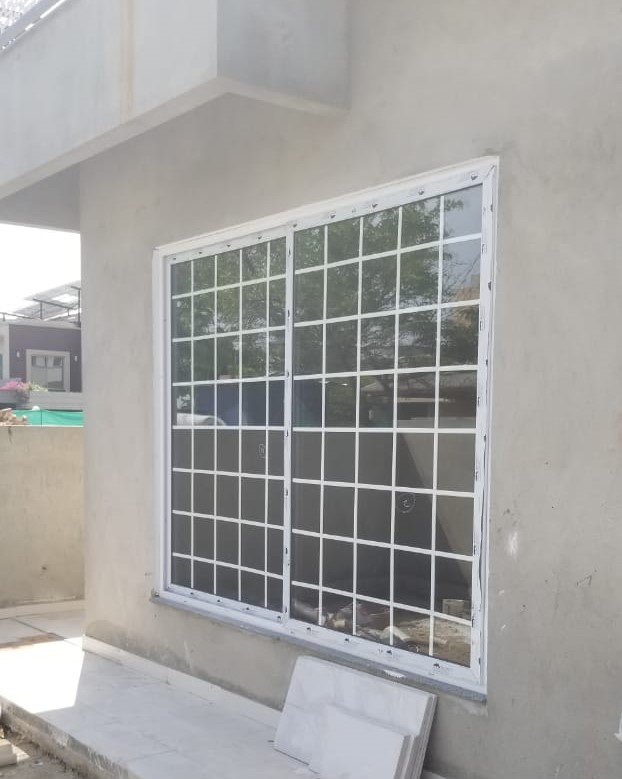Architectural and Engineering Glossary
C
An electric component which consists of conducting plates insulated from each other by a layer of dielectric material;introduces capacitance into a circuit.
A single phase induction motor with its main winding connected to a source of power and having an auxiliary winding connected in series with a capacitor to facilitate starting.
1.See carrying capacity.2.The volume contained in a vessel.3.The maximum or minimum water flow obtainable under given conditions (e.g.,specified conditions of pressure,temperature,and velocity).
The ability of masonry to store heat; depends on its mass,density,and specific heat.
A rectangular house,commonly one or one and a half stories high,that is similar to a Cape Cod house,but has a shingled mansard roof rather than a shingled gable roof.
A long cold chisel which has a long taper and a narrow cutting edge;used for cutting keyways and the like.
Premium Product & Services
Best products and services from our partners
A colonial one-and-a-half- story rectangular house of wood-frame construction that originated on Cape Cod,Massachusetts.Usually characterized by:a massive central chimney serving all fireplaces;a gable roof;a roof covering and exterior wall covering of hand split wood shingles,left unpainted to weather to a gray color;double-hung windows on the first story and often on the gable end walls;paneled doors;a partial basement.Cape Cod houses are of three types:full Cape house,which has two windows on each side of the front door;three-quarter Cape house,which has two windows on one side of the front door and a single window on the other side; and a half Cape house,which has two windows on one side of the front door and none on the other.
A term used in some parts of New England for a Cape Cod house.
A local tufa stone used for building construction in ancient Rome.
A Hispanic open chapel,usually adjacent to a church.
1.The principal chapel in Spanish churches.2.The area directly around the high altar of a church.
1.The movement of a liquid in the interstices of soil or other porous material,as a result of surface tension.2. The phenomenon responsible for dry soil sucking up moisture above the ground water level.Also see capillary flow.
A space between two surfaces which is purposely made wide enough to prevent the movement of moisture through the space by capillary action.
The flow of moisture through a capillary pore system,as in concrete.
A groove formed between two building components to prevent capillary action between them.
Same as sweat joint.
See capillary flow.
In cement paste,any space not occupied by anhydrous cement or cement gel.Air bubbles, whether entrained or entrapped,are not considered to be part of the cement paste.
A tube of small internal diameter;used in refrigeration as a control for the flow of liquid refrigerant,or as an expansion device between the condenser and evaporator;or used to transmit pressure from the sensitive bulb of a temperature control to the operating element.
Water,above the water table,held there by capillary action.
The topmost structural member of a column,pilaster,anta,or the like, often decorated; may support an architrave,1 or may be surmounted by an impost. See illustrations under the various orders;also see angle capital,basket capital,bracket capital,bud capital, Byzantine capital (illustrated under Byzantine
The cost of acquiring a building,including any substantial improvements the building may require.
The main dwelling of a manor house.See messuage.
Official meeting place for a legislative body.
The choir,or chapel of the choir.
Any architectural member serving as a cap,1,such as a coping.
The application of roofing felt to a roof deck.
A piece of timber covering the heads of a series of uprights or other vertical structure.
A plane used for rounding the upper surface of wooden railings.
In an ancient timber roof,a brace or strut;a king post or tie beam.
1.Any single stone in a coping.2.A stone placed at the top of a stone arch.
In colonial New England,a house having a truncated hipped roof and chimneys at both gable ends;has a widow’s walk and/or a cupola on the roof.
See widow’s walk.
See cap molding.
See elevator car.
An electric device in an elevator car which provides a visual indication of floor landings.
See elevator car door.
An electric device which prevents movement of an elevator car unless its door (or gate) is in the closed position.
Same as elevator car platform.
A spiral stair.
An arc-cutting process in which the severing of metal is effected by melting with the heat of an arc produced between the carbon electrode and the metal being cut.
A spotlight employing a high intensity arc light source.
An arc welding process wherein coalescence is produced by heating with an arc between a carbon electrode and the work.
A synthetically produced black pigment,almost pure carbon;used to color paint and concrete because of its high shading strength.Also see animal black.
A high intensity electric discharge lamp employing an arc discharge between carbon electrodes.
Said of rock containing organic matter.
The reaction between carbon dioxide and calcium compounds,esp.in cement paste,mortar,or concrete,to produce calcium carbonate.
The frame of timbers which supports the floorboards above and the ceiling below.
A framework of timber which spans a building and carries the boarding and other covering.
1.A prison.2.A starting stall in a Roman circus for horse or chariot races.3.The dens for beasts in an amphitheater.














